Email marketing automation is sending relevant emails to subscribers based on events and triggers. This strategy allows marketers to send personalized messages to prospects and customers on a schedule or when specific conditions are met. With SendPulse Automation 360, you can automate sales and communication with clients, combining emails, push notifications, and chatbot messages for better performance.
In this video, a SendPulse marketer explains how to get email marketing automation.
Email marketing automation is all about making promotional campaigns an automated process. How is it useful? Automating emails saves marketers the hassle of creating and sending new emails each time when a prospect shows interest in a brand, a customer abandons a cart, business launches a sale, and so forth. Apart from that, studies have shown that using marketing automation software leads to an 80 percent increase in the number of leads and a 77 percent boost in conversions.
Why use email automation for marketing?
- Create segmented mailing lists
- Convert prospects into customers
- Maintain engagement with prospects and existing customers
- Increase efficiency
- Improve engagement
Here are five reasons why every marketer should implement email marketing automation. One can:
Create segmented mailing lists
Email marketing automation enables businesses to create highly segmented mailing lists. Marketers can segment their lists based on subscriber activities and Customer Relationship Management data (entire purchase history, last purchase, lead stage, etc.)
From effective segmenting, marketers can reap highly-targeted marketing automation workflows that maximize both sales and engagement.
Convert prospects into customers
Email is a perfect tool for lead nurturing. Email automation helps marketers to nurture the leads that they need to convert through their sales funnel effectively. It ensures that they avoid the labor-intensive task of sending marketing emails manually.
Maintain engagement with prospects and existing customers
Email marketing automation provides online marketers with click-through data that enables them to identify which assets or links within their emails get favorable responses. By taking this information into account, marketers can then optimize the effectiveness of the messages in their emails to avoid complaints, build positive brand impressions, and reduce the number of unsubscribes and bounces. In the end, marketers get to maintain healthy levels of engagement with both prospects and customers.
Increase efficiency
With email automation, online marketers can computerize repetitive CRM tasks and save a lot of time and effort. Some of the activities they can automate include: storing and tracking customer data, determining the level of interest of their customers and their intention to buy using lead scoring, re-establishing contact with inactive leads, calculating return on investment (ROI).
Improve engagement
Email automation enables marketers to provide appropriate, personalized, and timely messages to their subscribers. In turn, marketers boost the engagement subscribers have with their brand.
Discover more about email marketing automation in our blog
Benefits of Email Marketing Automation
- Increased transactions
- Effective segmentation
- Increased revenue with transactional emails
- Integrate with the customer buying cycle
Email marketing automation has several advantages. These are:
Increased transactions
Email automation allows marketers to provide personalized fields, for instance, name, location, company name, and so forth, in email messages. Customizing marketing messages in this way results in open rates increased by 26%. Also, worth noting is that emails with personalized messages lead to a transaction rate that is six times higher.
Effective segmentation
Email marketing automation helps marketers to send out relevant messages to their subscribers. It allows brands to segment (based on data) both leads and customers into different groups to ensure that they receive the offers they’re interested in. According to MailChimp's study, segmented email campaigns have 100.9 percent higher click-through rates and 14.3 percent higher open rates.
Increased revenue with transactional emails
Transactional emails are messages sent to website visitors automatically after they perform a specific action, for example, downloading an eBook, purchasing, and so forth. Email marketing automation allows proactive marketers to use transactional emails to take other measures. For instance, an email for confirming an order could also include “Similar Products” at the bottom of the message.
Integrate with the customer buying cycle
Email automation allows marketers to sync their business activities with the purchase cycle of their customers. It enables them to send emails right about the time a customer needs another of their products. For instance, if a customer purchases bleach once a month, a marketer can schedule a promotional email that goes out to the customer after four weeks.
How does email marketing automation work?
Email automation is all about triggers and actions. When a particular event is triggered, a specific email or set of emails are sent. The length of an automated email series depends on the number of marketing actions the business wants to automate. The marketer can, therefore, be as creative as they want in the type of content they send to subscribers. To enable email marketing automation, a marketer creates an email flow using an email service.
An email flow is a series of automated messages sent to a subscriber based on their data or specific behavior.
Using workflow, businesses can send the right emails to leads at the right time based on the information they have about them.
By tracking the activities of leads when they are engaging with the brand, marketers can gather insights and use them to set triggers that will send the most relevant messages. An email service such as SendPulse helps to set up and customize these triggers or events according to the marketer’s specifications.
Email marketing automation can be used for both B2B and B2C companies. Both types of businesses can use automation flows to send welcome emails, re-engagement emails, or feedback request emails. B2B brand set triggers for the following actions:
- A visitor views a particular page on a business’ website.
- A prospect starts following the business on social media.
- A potential client shows repeated interest in specific products or services offered by the company but does not make direct contact.
B2C brands, on the other hand, end automated emails when:
- A potential buyer views a particular product but does not add them to their shopping cart.
- A customer added products in their cart but didn't purchase them (abandoned cart).
- New or existing customer converts.
Businesses should take advantage of email marketing automation to not just reach prospective customers but also to enhance relationships with existing customers.
How to automate email marketing in SendPulse?
- Go to the Automation 360 tab
- Choose an event
- Create an automation flow
- Monitor conversions
SendPulse allows businesses to set up and monitor workflows quickly and conveniently. To get started, sign up in SendPulse.
Step 1: Go to the Automation 360 tab
On the user dashboard, click on “Automations,” then “Create new automation” and select Automation 360. This tool allows the marketer to set up automated emails, SMS, and web push triggered by certain events or conditions and send to a subscriber on an existing mailing list.
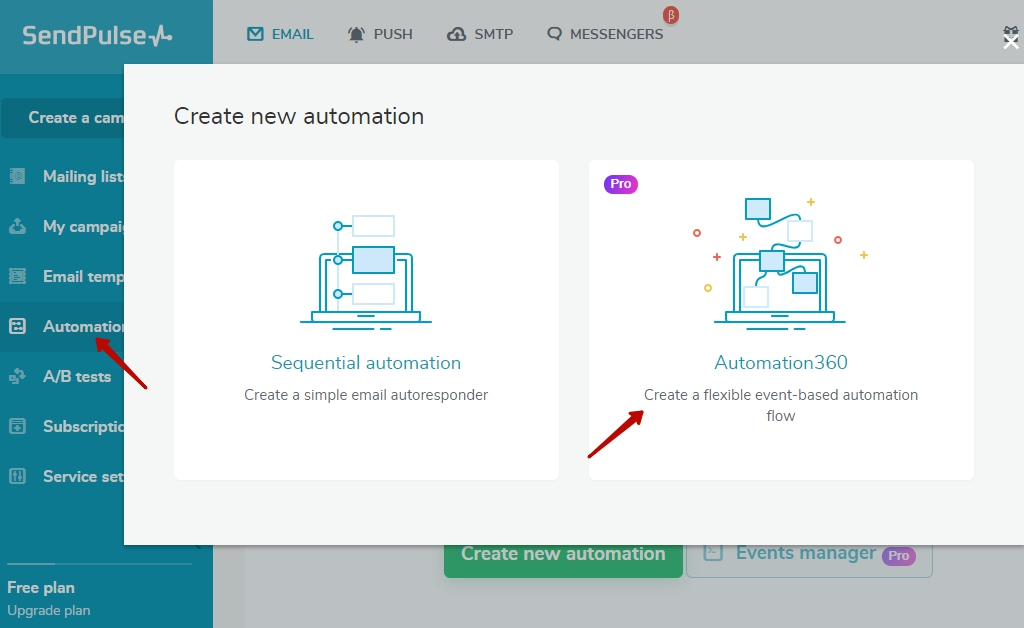
Step 2: Choose an event
Select a start event or condition. It could be a particular date such as a birthday, a contact webhook, or a custom event set by the user. When this start event is triggered, the automation flow immediately begins. For a successful campaign, set a trigger based on the behavior of recipients on the database.
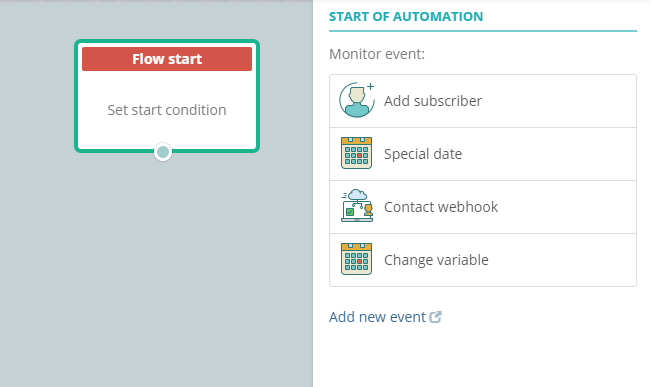
Step 3: Create an automation flow
Begin creating the automated flow starting with the event set. There is a settings panel where one can change specifications about the automation flow. Use “conditions” to set the next step in the automation flow and “filter” to personalize emails based on gender, location, and so forth. Automation 360 also allows marketers to manage their mailing lists. One can copy, move, update, or delete contacts on a list.
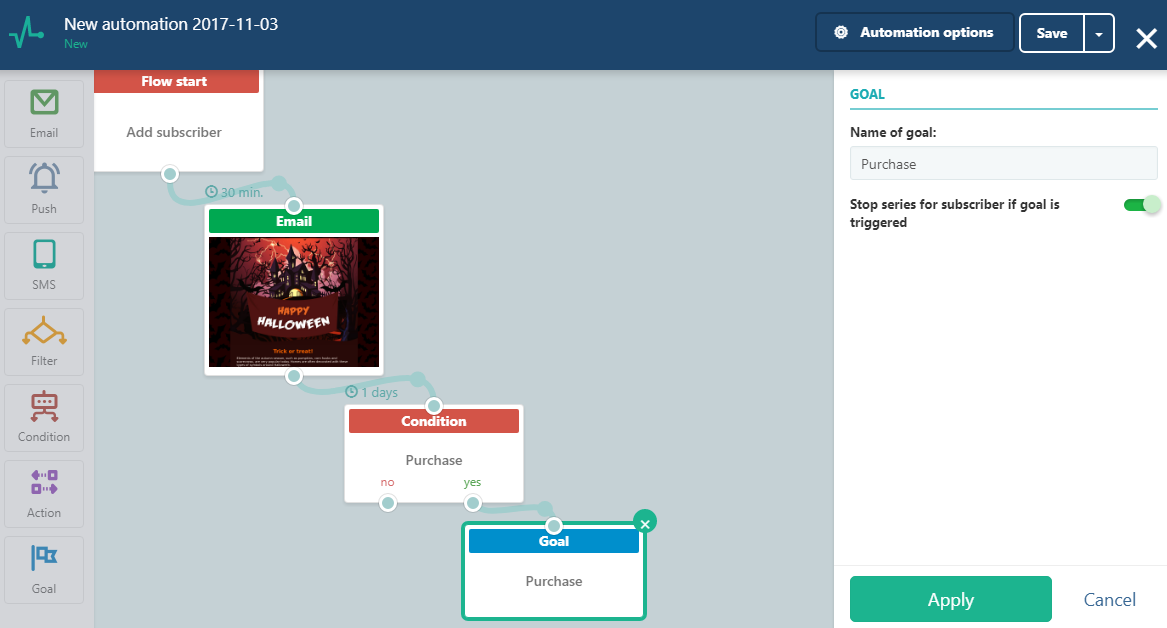
Step 4: Monitor conversions
Conversion is the accomplishment of the goal, as specified by the marketer. It can be open rate, clicks-through, or purchases. In this case, the event is the goal, and if achieved, it becomes a conversion. After the email is sent, add a condition and choose the intended target, for example, purchase. When a customer buys, it will count as a conversion. Thus, you can track how many conversions are made against the emails sent.
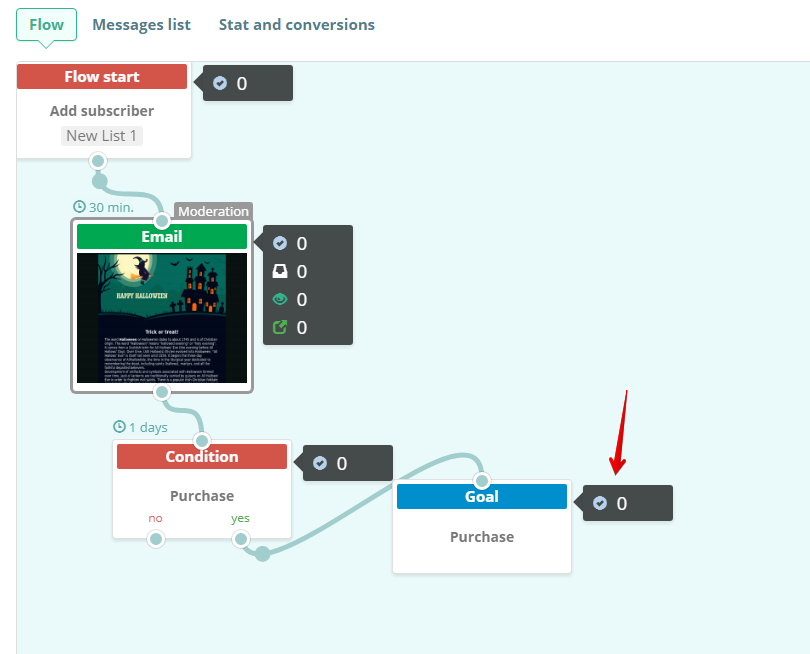
Email Marketing Automation Best Practices
- Design a branded email template
- Send an onboarding series
- Segment your mailing list
- Nurture leads
- Send milestone emails
- Bring clients back to their shopping carts
- Upsell and cross-sell automatically
- Send transactional emails
- Re-engage passive clients
- Manage your mailing lists
In this section, we'll share automated email ideas and tools that you can use in your strategy. They will help you boost user engagement, establish long-lasting relationships, and increase sales.
- Design a branded email template. We strongly recommend you create a unique email template and use it every time you send a campaign. This will help you save time and increase your brand recognition. With the SendPulse drag and drop editor, you don't need to know HTML to create a professional email template.
- Send an onboarding series. This is your chance not only to welcome new subscribers, but to create a good first impression. Let users know how your brand can help solve their problems. For this purpose, provide links to the top-rated content, most visited pages, or your best products. Share a guide on how to get the most out of your service. Create several emails that will be sent according to your subscribers' behavior.
- Segment your mailing list. You can start grouping your list into segments with your welcome series. Add a link to your Preferences Management Center where users can choose the frequency and type of emails they want to receive from your brand. Then, subscribers with similar choices will automatically be added to the corresponding lists. You can also let them choose the topics or products they're interested in, and send different emails to each segment. This way, you'll boost customer engagement, email CTR, and sales.
- Nurture leads. Lead nurturing helps marketers turn prospects into clients by providing valuable content in each stage of the sales funnel. You can effectively nurture leads with automated emails. An onboarding email series is part of this process. You need to understand your leads’ level of engagement, whether they are aware of the benefits of using your service and if they actually realize how to use it effectively. Provide them with relevant educational content and offers in each stage.
- Send milestone emails. These emails are sent on special days such as your client's birthday or the anniversary of their sign-up, first purchase, or any other important day. What's good about these emails, is their CTR. People appreciate brands that approach each customer individually. All you need is to keep the record of significant dates in your mailing list and then send automated emails using the necessary variable, for example, a user’s sign-up date. As a result, you'll increase your email CTR, empower your client relationships, and boost customer loyalty.
- Bring clients back to their shopping carts. Abandoned shopping carts are a pain point of each store owner. Still, you can remind customers about their carts and increase sales. Set up and send automated emails a day or two after a user added the item to their cart. Add a photo of a product, its price, delivery expenses, and the total. You can incentivize customers by offering a time-limited discount.
- Upsell and cross-sell automatically. With these marketing techniques, you can make a customer spend more money. Upselling means promoting a better and more expensive product of the same category, for example offering an iPhone 9 instead of the client’s initial choice — an iPhone 8. Cross-selling means promoting complementary products, for example, a case or earphones together with a phone. So, you need to create a list of products that you can promote with each item. After that, you can set automated email sending right after clients place an order.
- Send transactional emails. These emails include order confirmations, shipment status updates, password reset emails, and pricing plan expiration emails. It would take you much time to send them manually to each customer. So, you can set up automated email sending once and maintain customer retention.
- Re-engage passive clients. Users may lose interest in your brand or simply forget about it. If they haven't opened your emails for at least three months, send them a re-engagement email campaign. Ask them if they want to receive your emails and provide a unique offer to win them back.
- Manage your mailing lists. Every email you send influences your client's stage in the sales funnel. So you need to move them to different mailing lists to send relevant emails. For example, if users change their email preferences, they should be added to the corresponding list, or when they make a specific number of purchases. The good news is that you don't need to do this manually. Just tick this option when creating an email flow and choose the necessary list.
Email Marketing Automation Examples
Here are some examples of common automated marketing email:
Welcome email
An automated welcome email is the first interaction that a business has with a new subscriber. The purpose of this email is to welcome the new contact to the group and encourage them to engage with the company further. An example of a welcome email:
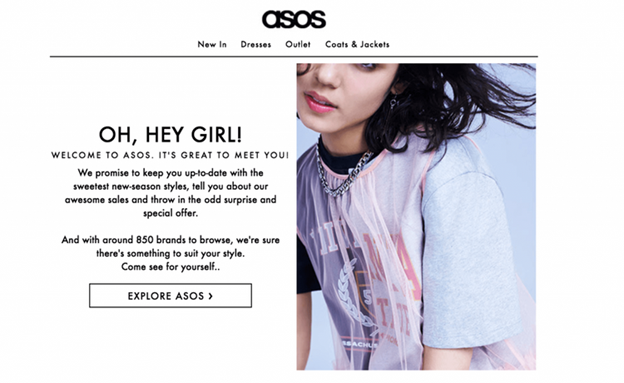
Abandoned cart email
Sometimes a customer may add items to a shopping cart but abandons them during checkout. An abandoned cart email is a follow-up message sent to such customers to remind them of the products that they left in the cart. It allows customers not to miss a sale.
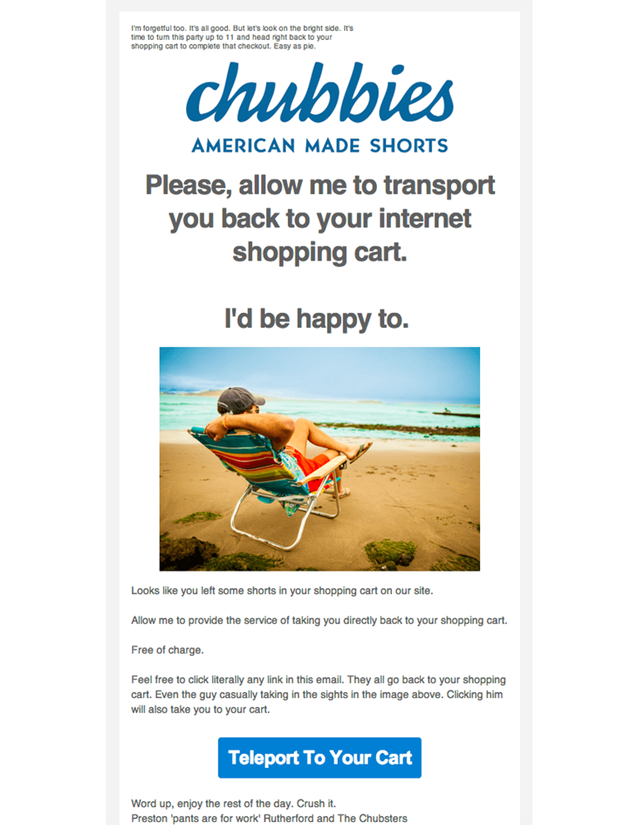
Order confirmation email
An order confirmation email is sent immediately after a customer makes an order. It gives the customer essential details about the purchase to check.
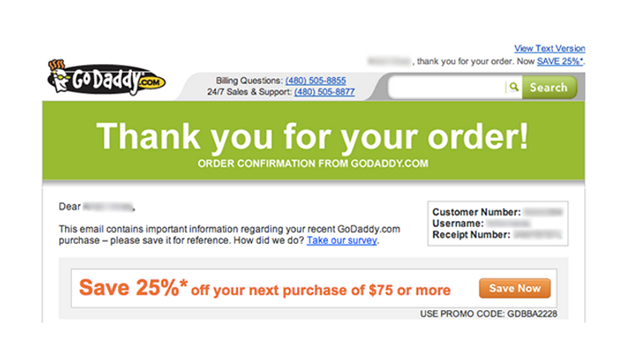
Thank you email
A thank you email is sent after a visitor subscribes or makes a purchase. It is a strategic way for a business to foster personal client relationships.
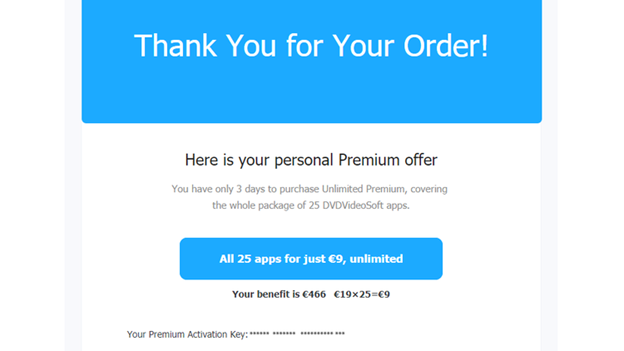
Sign up and automate email marketing with SendPulse!
References
- The article defines the term and offers actionable tips to grow your business with email automation.
- That's a guide for beginners on how to get started with automated emails. Here you'll find campaign types along with examples and tips.
FAQ
? How can I use SendPulse for email marketing automation?
With SendPulse, you can create free email workflows, and set up specific triggers from user actions to send your emails. Our service also allows you to combine automated emails with SMS and web push notifications to enrich your communications with customers. Register with SendPulse to get the most out of email marketing automation.
⚙️ What is a marketing automation email service?
It is a bulk email service that provides functionality for sending automated emails. Once you register your SendPulse account, you’ll be able to send all sorts of emails triggered by user actions — welcome, transactional, confirmation, and abandoned cart emails for free.
? Why is automation the future of email marketing?
Firstly, bulk email services, like SendPulse, provide brands with technology to run automated email marketing. Secondly, email marketing automation is easy-to-use and affordable with SendPulse — it’s free for up to 15,000 emails to up to 500 recipients monthly. This means that small businesses can afford to use email marketing automation to grow faster. The last reason why marketing automation is a must today is that users have come to expect personalized communication with their favorite brands.
? What kinds of emails should I include in my marketing automation?
Use welcome emails for onboarding, and anniversary emails to celebrate your relationships with loyal subscribers. Sending abandoned cart emails will make some customers return to their purchase, while reactivation emails will re-engage some idle subscribers and help you clean your mailing list. You can set up and send all of these emails with SendPulse for free.
Last Updated: 28.09.2024


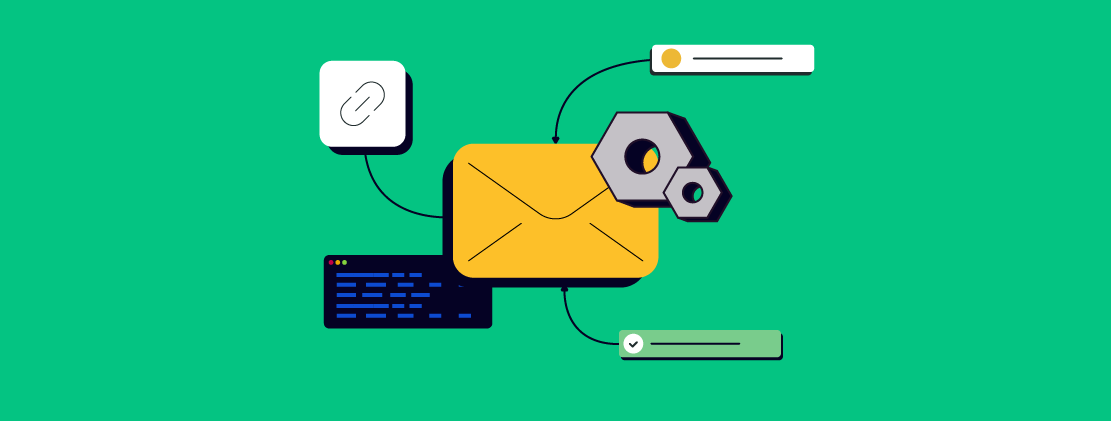

or